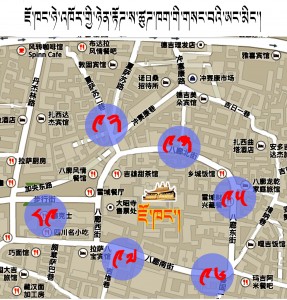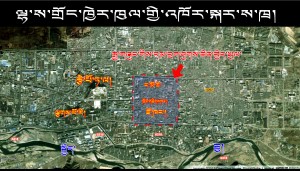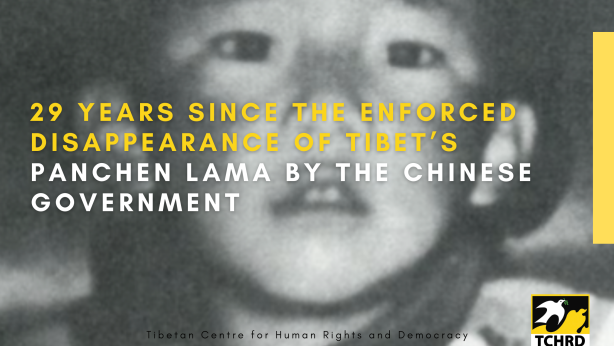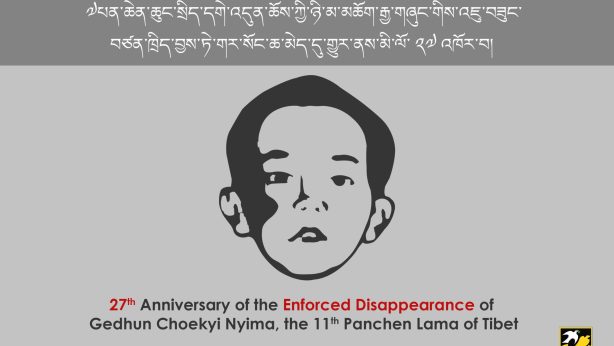Official Chinese notification puts Nagchu Tibetans under secret surveillance

Days after the violent crackdown on local Tibetans in Diru County in Nagchu (Ch: Naqu) Prefecture, Chinese authorities in Lhasa City have issued a notification to various ‘convenience police posts’ in Lhasa and Nagchu to monitor the movement and activities of Nagchu Tibetans.
Human Rights Watch had earlier reported that by July 2012, 676 permanent “convenience police-posts” (Ch.: bian minjing wu zhan) had been set up in Tibet Autonomous Region (TAR). These are manned by police officers who are on duty around-the-clock.
According to the notification, police officers would use secret codes when relaying information in real time about the movement and activities of Tibetans visiting Lhasa from Nagchu. The notification mentions that police officers would use secret codes for Diru (Ch: Biru) County, Drachen (Ch: Bachen) County and Sog (Ch: Suo) County, all located in the eastern part of Nagchu Prefecture, when relaying information about individuals from these areas. For instance, the secret code for Diru County is “A”. It appears that each county in Nagchu Prefecture has been assigned a secret code for police surveillance.
The notification seeks to bring Nagchu Tibetans in Lhasa particularly those visiting and living in the traditional Tibetan neighbourhood under 24-hour police surveillance. [See accompanying maps for the location of ‘security checkpoints’ and Lhasa’s old Tibetan neighbourhood mentioned in the notification]

Police officers manning ‘convenience police stations’ would constantly share information in real time about the whereabouts of Nagchu Tibetans in Lhasa, making it convenient for the authorities to immediately arrest potential ‘trouble makers’.
Following is a rough translation of the Chinese language notification issued on 8 October 2013 by Old Lhasa Neighbourhood Committee:
To All Convenience Police Stations in [Lhasa’] Old Neighbourhood,
To thoroughly implement the spirit of stability maintenance meeting held in Lhasa City and to normalise the stability maintenance regulations in the old neighbourhood, following instructions must be followed when using secret codes to identify and share information about three eastern counties in Nagchu Prefecture:
How to Use Secret Codes: When using secret codes [to identify Nagchu Tibetans], Nagchu men must be called “male tourists” while Nagchu women must be called “female tourists”. Likewise, secret code for Biru County is “A”; secret code for Suo County is “B”; and secret code for Bachen County is “C”.
How to Send Secret Codes: For instance, if convenience police station no. 89 learns that three male individuals from Diru County have entered the area under convenience police station no. 91, police station no. 89 must relay this information to station no. 91 through mobile handsets by saying: “Station No. 91, three male tourists from “A” have entered your area, please extend hospitality!”
First, police checkpoints in the inner circle of Barkhor must keep track of Nagchu Tibetans in areas under their jurisdiction. The movement and activities of Nagchu Tibetans must be monitored all through their stay in this area. If [Nagchu Tibetans] leave this area for another, police officers in the previous area must inform a police checkpoint closest to the next area where they have entered.
Security checkpoint 1 and 2 must inform police station no. 89 located in front of the Jokhang Temple square when they learn about Nagchu Tibetans entering the old neighbourhood.
Security checkpoint 3 must inform Xia Sasu [Tib: Shasarsur] police station no. 92 when they learn about Nagchu Tibetans entering the old neighbourhood.
Security checkpoint 4 must inform police station no. 93 in the northern part of Barkhor market area when they learn about Nagchu Tibetans entering the old neighbourhood.
Security checkpoint 5 must inform Tsetan Khangsar police station no. 94 when they learn about Nagchu Tibetans entering the old neighborhood.
Security checkpoints 6 and 7 must inform police station no. 95 in the eastern part of Barkhor market area when they learn about Nagchu Tibetans entering the old neighbourhood.
Security checkpoint 8 must inform police station no. 96 in the southern part of Barkhor market area when they learn about Nagchu Tibetans entering the old neighbourhood.
Security checkpoints 9 and 10 must inform police station no. 97 in the southern part of Barkhor market area when they learn about Nagchu Tibetans entering the old neighbourhood.
Second, security checkpoints located in the outer circuit of Barkhor must monitor the movement and activities of Nagchu Tibetans and share information through mobile handsets.
Third, be careful when using secret codes through mobile handsets to monitor the above mentioned individuals. And suspicious persons must be subjected to thorough search and vigilance.
Issued by Old Lhasa Neighbourhood Committee, 8 October 2013
Below is the original Chinese version of the notification:
关于各站接力交接那曲籍人员的通知
老城区各便民警务站:
深入贯彻落实市局维稳防控会议精神,按照支队领导的 安排部署,为确保老铋区社会治安秩序平稳正常,现将有关 手台上报那曲东三县人员代号及方法通知如下:
代号描述方法:那曲籍男子(代号:男游客)、那曲籍 女子(代号:女游客),比如县(代号:A区)、索县(代号:
B区)、巴青县(代号:C区i如:89号站发现那曲比如县 男子3名进入91号站辖区,手台用语描述为:“91号站,A 区男游客3名进入你辖区,请接待!”
一、八廓内圈各警务站在接、到辖区安检站交接的那曲籍人 员后,应注意人员动态,并在其离开本辖区时通过手台向 临近警务站进行交接。
一号安检站、二号安检站进入老城区的那曲籍人员由89 号大昭寺广场警务站负责接力交接;
三号安检站进入老城区的那曲籍人员由92号夏萨苏警 务站负责接力交接;
四号安检站进入老城区的那曲籍人员由93号八廟北街 警务站负责接力交接;
五号安检站进入老城区的那曲籍人员由94号次旦康萨 警务站负责接力交接;
六号安检站、七号安检站进入老城区的那曲籍人员由95
号八廓东街便民警务站负责接力交接;
八号安检站进入老城区的那曲籍人员由96号警¥站八^ 廓南街警务站负责接力交接:L
九号安检站、十号安检站进入老城区的那曲籍人员由97 号大昭寺南门警务站负责接力交接;
二、八廓外圈各警务站在接到临近警务站交接信息后,应 注意人员动态,并在其离开本辖区时通过手台向临近警务 站进行交接。
三、严格使用手台用语,注意观察此类人员动态,并加大 对可疑人员的盘查检查力—
此通知
老城区指挥部 2013年10月8日


